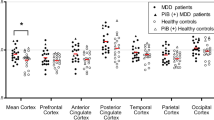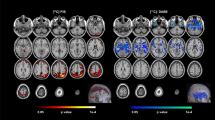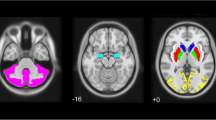Summary.
In patients with Wilson’s disease (WD), depression is a frequent psychiatric symptom. In vivo neuroimaging studies suggest that depression and other neuropsychiatric disorders are associated with central serotonergic deficits. However, in vivo measurements of serotonergic neurotransmission have not until now been performed in patients with this copper deposition disorder. The present prospective study revealed that depressive symptomatology is related to an alteration of presynaptic serotonin transporters (SERT) availability as measured by [123I]-2β-carbomethoxy-3β-(iodophenyl)tropane ([123I]β-CIT) and high-resolution single-photon emission computed tomography (SPECT). SERT imaging with [123I]β-CIT-SPECT could therefore become a useful tool for diagnosis and therapy monitoring in depressed WD patients.
Similar content being viewed by others
Author information
Authors and Affiliations
Additional information
Received December 10, 2001; accepted March 24, 2003 Published online June 10, 2003
Rights and permissions
About this article
Cite this article
Hesse, S., Barthel, H., Hermann, W. et al. Regional serotonin transporter availability and depression are correlated in Wilson’s disease. J Neural Transm 110, 923–933 (2003). https://doi.org/10.1007/s00702-003-0008-8
Issue Date:
DOI: https://doi.org/10.1007/s00702-003-0008-8




